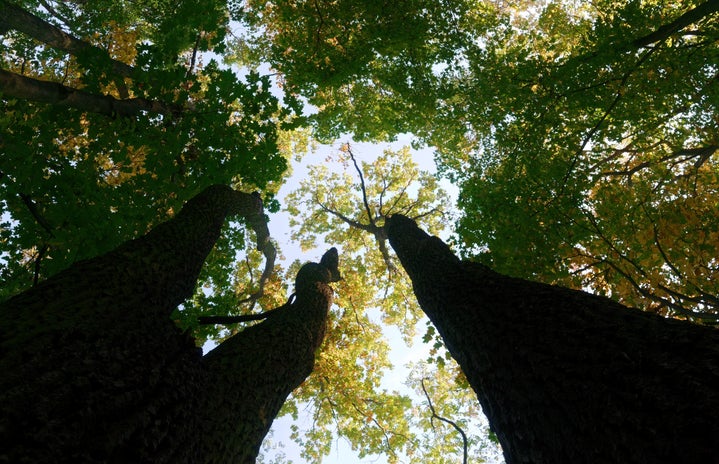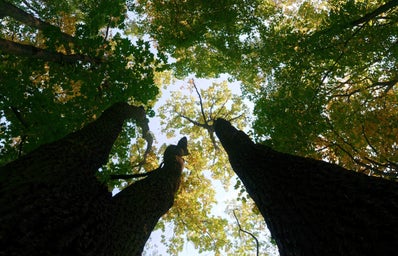For over 200 years, they survived—and thrived—as free Black people deep inside the Swamp.
Jesmyn Ward’s short story Mother Swamp (2022) follows a young woman and the nine generations of women before her who escaped enslavement and survived hunger, illness, and childbirth in the Louisiana swamps. In the Author’s Note at the end of the story, Ward said she was inspired by the Great Dismal Swamp, which stretches from southern Virginia to northeast North Carolina.
Ward asked herself the following questions: “What if there were a maroon settlement in the wilderness that sprang from one escaped woman? How would she build a family, a community, and guarantee their continued existence?” She continued, “How would they have survived? How would they have thrived?”
Inspired by Ward’s line of thinking and the inspiration behind her brilliant short story, I searched books, journal articles, and magazines for records of maroon communities across the world. My research, by coincidence or instinct, brought me back to the Great Dismal Swamp.
Maroon Communities
To begin my research, I explored the idea of maroon communities in the broader sense. To begin, the term “maroon” likely comes from the Spanish word cimarrón, which means “feral livestock, fugitive slave, or something wild and defiant.” Maroon communities were settlements of escaped slaves and their descendants that formed throughout North America, Africa, and other parts of the world. Attempting to live as free people, maroons developed their own culture, government, trade, and military defense against their oppressors. Some communities survived less than a year, while others were enormous and persisted for many generations.
Many maroon communities formed in remote, inhospitable areas like the Louisiana swamp in Ward’s short story. In the Guianas, jungles provided maroons with a safe haven. In Jamaica, some maroon groups lived in canyons and limestone sinkholes. Many maroon communities utilized the surroundings of the settlement to their advantage. In the Guianas, villages set in swamps were “approachable only by an underwater path, with other, false paths carefully mind with pointed spikes or leading only to fatal quagmires or quicksand.”
Some maroon communities also developed skills in guerrilla warfare, taking advantage of the environment with quick, controlled ambushes and communicating by drums and horns. Some maroon communities in Latin America were granted freedom through treaties. Others were defeated. But regardless of losses, maroon communities persisted as a “chronic plague” to the goals of white colonists, enslavers, and plantation owners across the globe.
Maroon communities are a fascinating, important aspect of transatlantic history not discussed enough. Even less research has been conducted on the maroon communities inside the United States, which were compromised of both Africans and African Americans. Maroon communities are a stark act of resistance against white-washed history and contrast the glorified ideas of obedient, child-like slaves dependent on their masters.
Below, I utilize Chapter Four of J. Brent Morris’ new book, Dismal Freedom: A History of the Maroons of the Great Dismal Swamp, to research the swamp that inspired Ward’s short story and harbored thousands of escaped slaves and free Black people.
The Great dismal Swamp
Maroon communities existed in the Great Dismal Swamp for over 200 years. From the early eighteenth century onward, the Great Dismal Swamp population ranged from hundreds to thousands. However, the area was so large that the Maroons themselves probably had no idea how many others shared their home. The geography of the Swamp (composed of many different islands) also contributed to the number of isolated communities.
Outsiders, including enslavers, were aware that many slaves escaped to the Swamp. It was known to be “difficult to keep slaves” in proximity to the Swamp. But no one quite understood what lay within the vast, mysterious lands of the Great Dismal Swamp. The Swamp was humid, hot, and filled with thick clouds of mosquitoes and dangerous animals like alligators—effectively keeping most enslavers and white people (who considered the land dirty) out.
For maroons, living free in the Swamp was a much better alternative than the horrors of the outside, so-called “civilized” world.
types of Maroons
Morris divides the Great Dismal Swamp maroons into different categories, including Fringe Maroons, Liminal Maroons, and Deep Maroons. These categories depended on where the maroon settled and how permanent their residency was.
Fringe Maroons
Fringe Maroons settled at the edges of the Great Dismal Swamp, able to access both the interior of the Swamp and the outside world. Some people took refuge in the Swamp for protection for a short period before moving on. Others stayed for a few years while waiting for passage on a northbound vessel. The Swamp, on the path from the Deep South to the North, was an important part of the Underground Railroad and a symbol of freedom for many.
Farming for Fringe Maroons was limited to “escape agriculture”; people utilized root crops that could be abandoned during times of danger and revisited later. Some Fringe Maroons depended almost entirely on plantations for food. For this reason, Fringe Maroons have been associated with stealing and looting plantations (which produced crops from enslaved labor).
Liminal Maroons
Similar to Fringe Maroons, Liminal Maroons kept connections with the outside world. However, they were more likely to remain in the swamp for an extended period. A Liminal Maroon may have sought to escape the horrors of slavery but wanted to stay close to family members. As Morris writes, “Family ties and Dismal freedom were not incompatible.” Some still-enslaved people helped Liminal Maroons by informing them about changes in patrol activities. Many Liminal Maroons would have developed a communication system (whistling, secret knock) with loved ones that helped them visit plantations safely.
Both Liminal Maroons and Fringe Maroons had to be careful with traveling and making fires, because plumes of smoke could identify the location of a maroon camp. Most movements occurred under the protection of nighttime. Maroons burned dry hardwood (oak, maple, hickory) because they were known to produce the least amount of smoke. Most maroons already had experience with hunting and the woods, which aided their experience.
Deep Maroons
Unlike the other two categories, Deep Maroons were long-term residents of the swamp who “sought to separate themselves physically, socially, and economically from the exterior world as much as possible.” Deep Maroons were permanently settled residents of the Swamp, spending years or decades in their isolated communities. Many parents gave birth to and raised children in the Swamp—children who never had to experience enslavement, like the young narrator in Ward’s short story.
Deep Maroons survived in the Swamp by digging large structures in the ground, creating houses elevated on stilts, or building homes in the trees. They created pits to use as water filters and were able to sustain themselves with nutritious diets from the land. Food security was less of a problem for Deep Maroons because their location deep within the Swamp protected them from outside intrusion. Deep Maroons raised small livestock (goats, pigs) and kept community gardens with sweet potatoes, rice, peas, beans, and more. Deep Maroons could also hunt animals like waterfowl, deer, turkeys, squirrels, fish, beavers, and bears. The Great Dismal Swamp provided a wonderful ecosystem of plants and animals that sustained many generations of Deep Maroons.
Modern Archeological Evidence
Today, the Great Dismal Swamp provides clean drinking water for communities and helps absorb gases that would otherwise harm the atmosphere. However, a lot of mystery still surrounds the Swamp, which has suffered from deforestation, climate change, and human development since the eighteenth century. Much research on the vital Swamp is abandoned because of the thick vegetation and weather conditions.
In the early 2000s, archeologist Dan Sayers forefronted field excavations of the Swamp in hopes of learning more about the maroons. He has recovered nearly 4,000 artifacts (pottery, arrowheads, nails) from an island located deep inside the Swamp. Some belonged to Indigenous peoples and were later found and repurposed by maroons. Sayers also found the remains of seven cabins.
Speaking about the maroon settlements, Sayers said, “Everything we’ve found would fit into a single shoe box. And it makes sense. They were using organic materials from the swamp. Except for the big stuff like cabins, it decomposes without leaving a trace.”
Sayers’ discoveries—almost 4,000 artifacts from just one island—prove that there is still so much we can learn from the Great Dismal Swamp about American history. As the Great Dismal Swamp faces imminent threats like climate change and human development, it is crucial that we protect the land and the abundance of cultural information it has preserved for centuries.
Conclusion
One of the lost aspects of American (and global) history includes discussion of the countless maroon communities that managed to survive—and thrive—in the wilderness and spark fear in the hearts of white colonists and slave owners. Jesmyn Ward brilliantly imagines a matriarchal maroon community in her short story, Mother Swamp, which was inspired by the Great Dismal Swamp located in Virginia and North Carolina.
Home and refuge to thousands of escaped slaves, the Swamp was an important part of the Underground Railroad and a symbol of hope. Many children born deep within the Swamp were protected by the land, which white people deemed unsuitable, and never had to experience slavery in their entire life.
Today, the Great Dismal Swamp symbolizes resistance against slavery, colonialism, and white-stream history. The Swamp is a place of immense cultural significance for many Indigenous people and people of color. Hopefully, Ward’s story will inspire others to learn more about the Swamp. Its role, providing refuge and protection, is vital to any accurate retelling of American history. History must be told through the lens of the enslaved, not the enslaver.
This article is part of a series, #FeministFriday, where Chloe Hummel seeks to highlight standout feminists making a difference in the world right now. Stay tuned!


